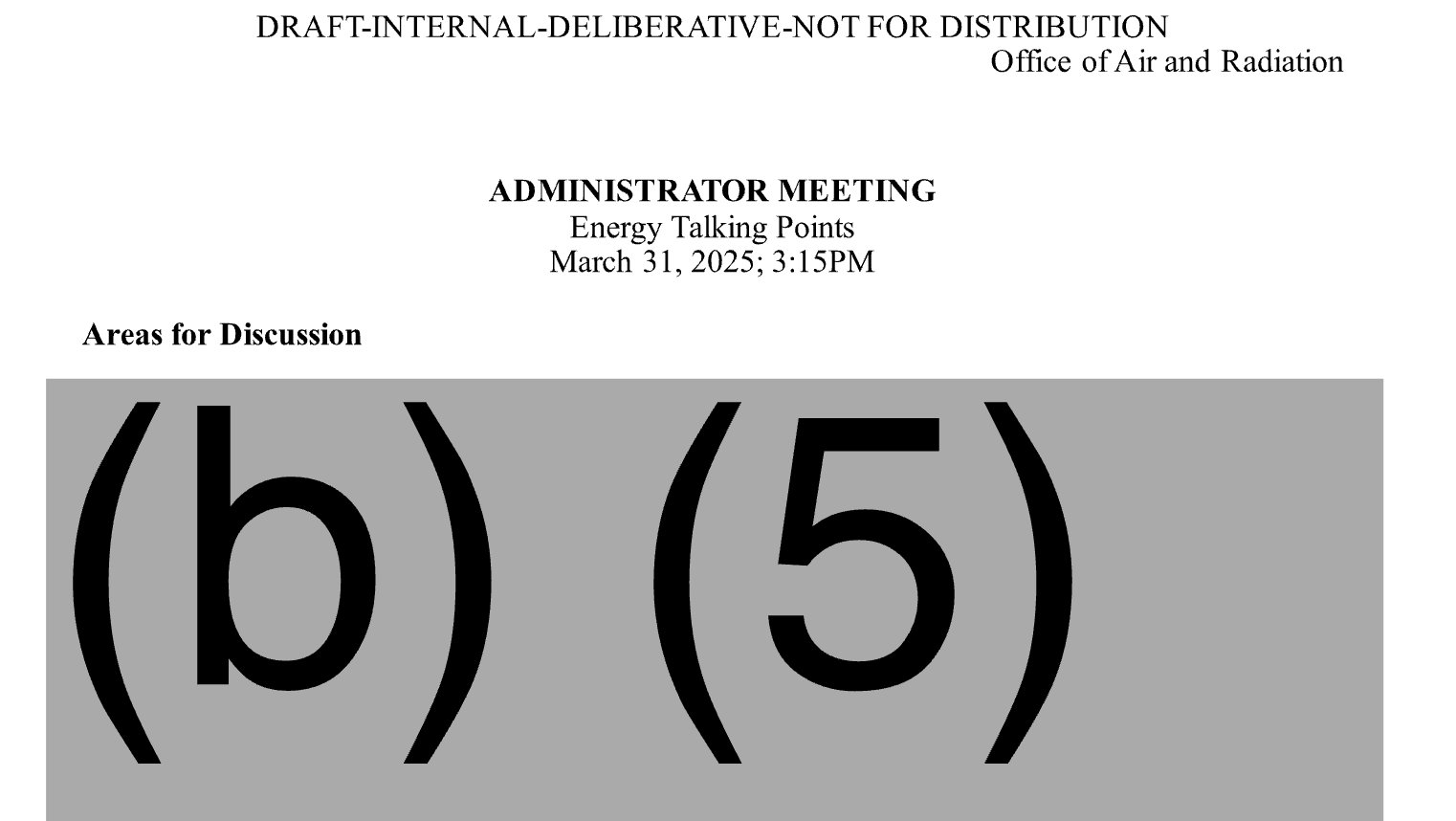Rachel Santarsiero is the director of the Climate Change Transparency Project at the National Security Archive, a Washington, D.C.-based research organization where I used to work.
She gets U.S. documents on climate change policy declassified through extensive Freedom of Information Act requests and archival research, and has written about President Donald Trump’s attack on climate data and the administration’s deep ties to the fossil fuel industry.
I asked her how she’s using FOIA under the second Trump administration, and what advice she has for other researchers and journalists.
Read on for her expert FOIA tips:
You recently wrote about an Environmental Protection Agency meeting with fossil fuel advocates. How did you use FOIA to shine some light on this story, and why is it important?
In April, E&E News reported on a meeting between EPA Administrator Lee Zeldin and fossil fuel advocate Alex Epstein. The meeting with Epstein, who has no scientific background and has expressed outright “hostility” to climate action, underscores the administration’s ongoing evisceration of U.S. climate policy.
E&E knew about the meeting because the agency’s building visitor logs are public. However, the purpose of the meeting was unknown, so I filed a FOIA request for documents about the meeting.
The documents, which I requested in May and were released in July, showed the meeting was initiated by Epstein and that he pressed the EPA to abandon its 2009 endangerment finding, which would effectively eliminate the agency’s ability to regulate greenhouse gases and link emissions to things like public health and human welfare.
The agency released a proposal to rescind the finding just last month — and the public deserves to know how much influence Epstein and other fossil fuel advocates had in this decision.
Were you satisfied with the EPA’s release?
The EPA released the documents quickly, which it deserves credit for, but didn’t release anything substantial about what Zeldin thought about Epstein’s proposal.
One document, which was redacted in full and would be interesting to the public if it were legible, contains the EPA’s thoughts on “areas for discussion” about the meeting. It could tell us how seriously the agency was considering Epstein’s recommendations and its plan for future deregulatory actions.
I immediately appealed, arguing that the EPA provided no justification for invoking the exemption it cited, and told the EPA to conduct a line-by-line review of the document to see what other information can be released.
What FOIA trends have you noticed with the other agencies that work on climate change — and do you have any FOIA tips for journalists?
In addition to the EPA, I file FOIA requests with the State Department, CIA, National Oceanic and Atmospheric Administration, NASA, the Department of Energy, the Defense Department, and the White House Council on Environmental Quality (one of the handful of White House offices you can FOIA).
Of those agencies, the EPA actually continues to be one of the best in terms of responsiveness (even if the responses are lackluster). Typically, EPA FOIA officials will either email or call asking for clarification about the request, and I’ll work with them directly to narrow its scope. Not all agencies will do that.
However, the key with any agency is sending targeted requests asking for specific types of documents, a date range, and the office or official who would’ve been responsible for the records.
Beyond not properly administering FOIA, how else is the Trump administration being secretive about climate change?
What we’re seeing under a second Trump administration is an unprecedented, rapid deletion and distortion of climate data and resources. Most recently, the administration erased the critical National Climate Assessments and dismantled the U.S. Global Change Research Program website, which housed the assessments. And, just last week, Secretary of Energy Chris Wright suggested the administration would even alter previously published assessments. The purpose of this data erasure and manipulation isn’t just to suppress information — it also inhibits any regulatory power the government has to study, inform, and enforce climate policy.
What advice can you give to other researchers and journalists who want to use FOIA to study environmental issues?
Even amid the current administration’s cuts to FOIA staff, closure of climate offices (like the EPA’s Office of Atmospheric Protection or the State Department’s Office of Global Change), and skyrocketing FOIA backlogs, I continue to file requests and encourage others to do so.
However, it’s imperative to do your research.
Check federal website reading rooms (the EPA releases all documents from previous FOIA requests on its public access portal) to see if the information you’re interested in has already been released.
Build relationships with FOIA officers: They can help give you a better idea of what you’re looking for.
And look to archival collections and other publicly available, open source materials — you’ll be surprised what you can find hiding in plain sight.





